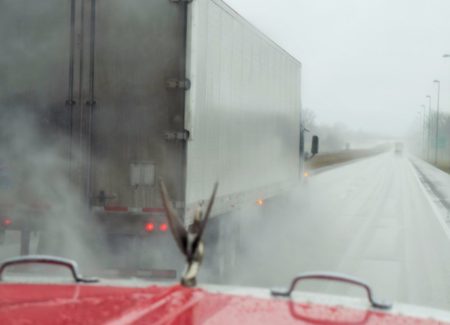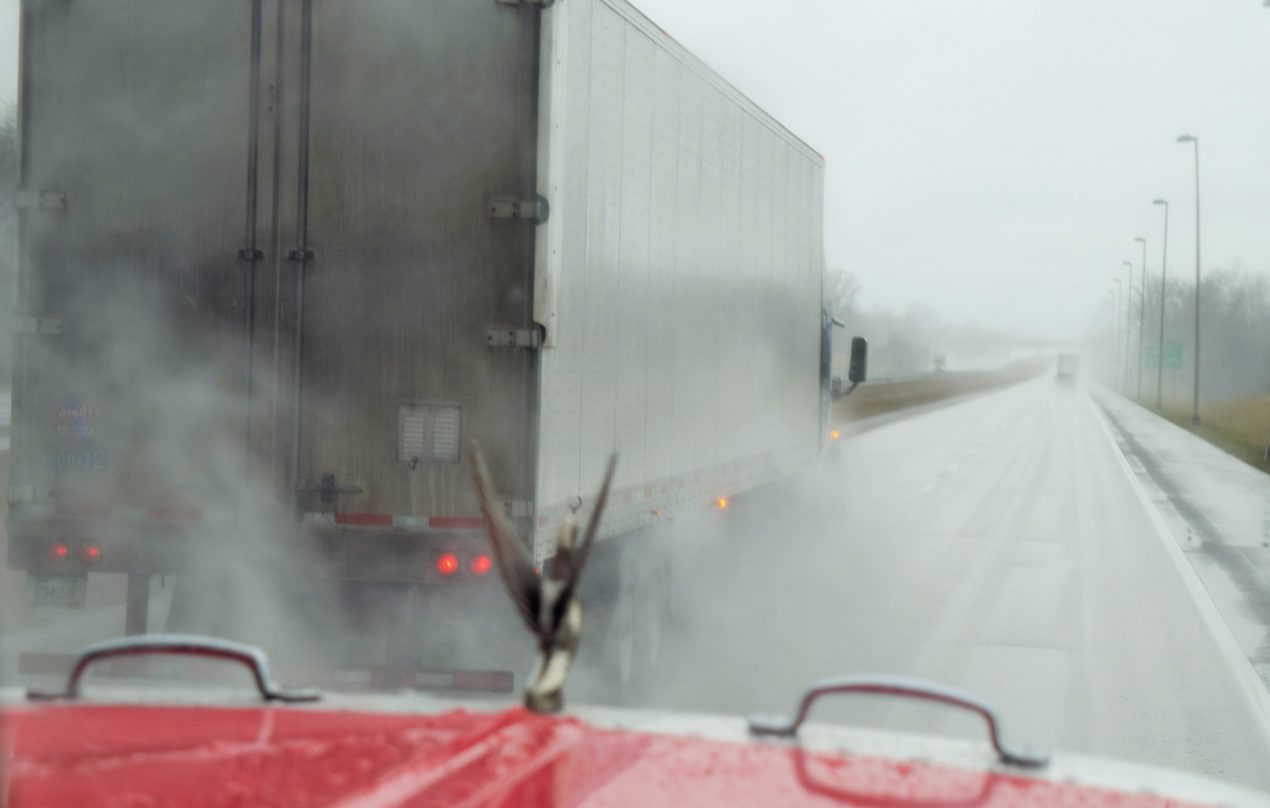
Federal safety regulators are proposing that heavy-duty vehicles be equipped with speed-limiting devices set to a specific maximum speed. A notice of proposed rulemaking was issued jointly on Aug. 26 by the National Highway Traffic Safety Administration (NHTSA) and the Federal Motor Carrier Safety Administration (FMCSA).
The NPRM comes after a decade-long push by trucking and safety advocates to put such a requirement in place for trucks and other commercial vehicles.
For its part, NHTSA is calling for establishing a new Federal Motor Vehicle Safety Standard (FMVSS). This FMVSS would require that each new “multipurpose” vehicle with a GVWR over 26,000 pounds be equipped with a speed limiting device.
The proposed standard would also require each vehicle, as manufactured and sold, to have its device set to a speed not greater than a specified speed and to be equipped with means of reading the vehicle’s current speed setting and the two previous speed settings (including the time and date the settings were changed) through its onboard diagnostic connection.
FMCSA is proposing a complementary Federal Motor Carrier Safety Regulation that would require each commercial motor vehicle with a GVWR of more than 26,000 pounds be equipped with a speed limiting device meeting the requirements of the proposed FMVSS applicable to the vehicle at the time of manufacture, including the requirement that the device be set to a speed not greater than a specified speed.
In addition, carriers operating such vehicles in interstate commerce would be required to maintain the speed limiting devices for the service life of the vehicle.
However, no speed limit has been proposed yet for the proposed limiters. The Department of Transportation said only that the proposal “discusses the benefits of setting the maximum speed at 60, 65, and 68 miles per hour, but the agencies will consider other speeds based on public input.”
“This is basic physics,” said NHTSA Administrator Mark Rosekind. “Even small increases in speed have large effects on the force of impact. Setting the speed limit on heavy vehicles makes sense for safety and the environment.”
The speed-limiter NPRM was initiated way back in May of 2013. Seven years before that, the American Trucking Associations (ATA) petitioned the two agencies to require speed limiters on all large trucks that would be set in order to electronically limit top speed to no more than 65 mph.
According to DOT, the two agencies’ review of the available data indicates that limiting the speed of heavy vehicles would reduce the severity of crashes involving these vehicles and reduce the resulting fatalities and injuries.
“We expect that, as a result of this joint rulemaking, virtually all of these vehicles would be limited to that speed,” stated DOT in its notice. DOT said that implementing the proposal safety “could save lives and more than $1 billion in fuel costs each year.”
“There are significant safety benefits to this proposed rulemaking,” said Secretary of Transportation Anthony Foxx. “In addition to saving lives, the projected fuel and emissions savings make this proposal a win for safety, energy conservation, and our environment.”
The American Trucking Associations (ATA) “hailed” the NPRM “as a potential step forward for safety.” ATA President and CEO Chris Spear said the lobby was “pleased NHTSA and FMCSA have, almost 10 years after we first petitioned them, released this proposal to mandate the electronic limiting of commercial vehicle speeds. Speed is a major contributor to truck accidents and by reducing speeds, we believe we can contribute to a reduction in accidents and fatalities on our highways.”
Spear added that carriers that are already using speed limiters voluntarily “have found significant safety, as well as fuel efficiency and equipment lifespan benefits with little to no negative impact on productivity. We will be carefully reviewing and commenting upon today’s proposal.”
Among those comments will be ATA’s position on the maximum speed setting and tamper-proofing of the devices.
ATA said its 2006 petition seeking this rulemaking sought a maximum speed of 68 mph and that the association’s safety agenda calls for a national speed limit for all vehicles of 65 mph.
“In their proposal, the agencies say setting the speed at 68 could save 27 to 96 lives per year; setting it at 65 could save 63 to 214 lives annually and at 60 could save 162 to 498 lives,” ATA said in a statement, “but notes that they do not have the same confidence about the data for the 60 mph alternative as the other two options.”
The association also said the proposed rule “despite ATA’s initial request does not mandate the limiters be tamper-proof, instead it proposes requiring motor carriers to maintain the speed limiting devices at a set speed within the range permitted by the Federal Motor Vehicle Safety Standards.”
While ATA has long been a proponent of speed limiters, the Owner-Operator Independent Drivers Association (OOIDA) responded to the NPRM by calling it a “dangerous mandate.”
OOIDA contends that use of “such devices create speed differentials that lead to more crashes and promote road rage among other motorists.”
OOID also argues that speed limiters “actually take control out of the hands of drivers in that there are a number of scenarios that require drivers to accelerate in order to avoid danger.”
“Highways are safest when all vehicles travel at the same relative speed,” said OOIDA Executive Vice President Todd Spencer. “This wisdom has always been true and has not ever changed. “No technology can replace the safest thing to put in a truck, which is a well-trained driver.”
Source: truckinginfo.com







